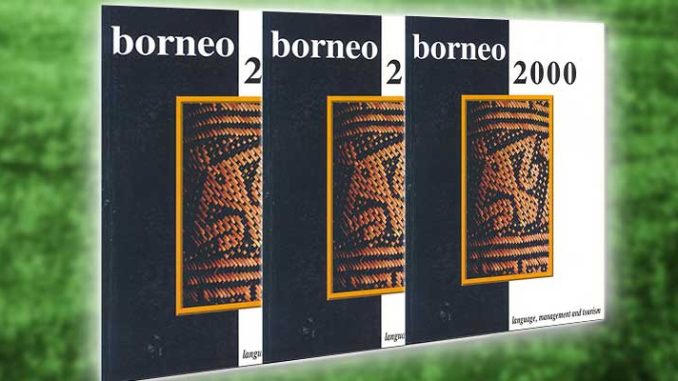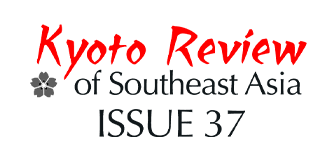
Borneo 2000: Environment, Conservation and Land
Michael Leigh, editor
Kuching / Universiti Malaysia Sarawak / 2000
Research on the land tenure system began in early twentieth century Dutch Borneo to serve colonial governance (Appell 1997). In the succeeding 100 years, the topic has been discussed continuously. For example, in the annual academic Borneo Research Bulletin, five papers on land tenure appeared in three consecutive issues from 1997 to 1999. Today, as presented in Borneo 2000, the dispute is still fierce. The background to this long-sustained argument are conflicts between the government’s development policy and its implementation, such as commercial logging, large-scale infrastructure development, and plantation growth, on the one hand, and natural resource use by indigenous people, on the other, as discussed in Dimbab Ngidang’s paper, “A Clash between Culture and Market Forces: Problems and Prospects for Native Customary Rights Land Development in Sarawak.” The conflict was thought to be a confrontation between modern and customary land use (e.g. Hong 1987); however, the structure of the confrontation cannot be explained by this simple opposition.
For example, it is frequently observed that indigenous systems are not static. The land tenure systems of some indigenous groups have transformed from communal to private, reflecting the influence of the market economy (Paul Porodong, “The Indigenous Belief Systems and Environmental Management: A Case Study among the Rungus of Sabah”), state land policy (Wuentin Gausset and Ole Mertz, “The Importance of Dusun Land Use and Natural Resource Management for the Crocker Range National Park, Sabah”), and legislation (Hooker 1997). Regional and ethnic variations are observed (Appell 1997), but even within the same region and ethnicity, periodic changes in land tenure systems are reported in response to changes in the socio-economic environment (Cramb and Wills 1998; Wadley 1997). Padoch concluded that the indigenous Iban practiced sustainable forest use through the development of their land management system (Padoch 1982), evidence of changeability and diversity that merits further study. It is also true that the government’s legal system regarding land has not been impervious to influences from the indigenous system. Laws and regulations have been made and revised partly after accepting the customary land tenure system of indigenous people. The co-evolution of indigenous and government land management systems will be an interesting theme, as pointed out by Hooker (1999).
In Borneo 2000, the two papers that deal with Sarawak (Ngidang; Peter Songan and Anthonius Sindong, “Identifying the Problems in the Implementation of the New Concept of Native Customary Rights Land Development Project in Sarawak through Action Research”) discuss the government’s new policy on land development and native land rights. The new policy aims to utilize native customary right (NCR) land to establish oil palm plantations. The registration of NCR land, which will promote land privatization, is urged. Does privatization, an indicator of modernization in land tenure, represent the future of Borneo? In contrast, Indonesia’s policy of decentralization of authority and empowerment of local communities has resulted in movements to restore customary land tenure rights and management systems. The result of research on this topic will appear in the near future. Gausset and Mertz, as well as Peter Eaton (“Land Tenure, Local Communities and Protected Areas: A Borneo Perspective”), argue that indigenous land tenure systems should be considered in developing policy for natural resource conservation. Keeping in mind that national policy in turn affects indigenous land management systems, we note that the land tenure of indigenous people in Borneo has been transforming in various directions, reflecting the dynamics of the natural, social, and economic environment.
Ichikawa Masahiro
The reviewer is a visiting researcher at Kyoto University’s Center for Southeast Asian Studies.
Kyoto Review of Southeast Asia. Issue 2 (October 2002). Disaster and Rehabilitation
References
Appell, G.N. 1997. The history of research on traditional land tenure and tree ownership in Borneo. Borneo Research Bulletin 28: 82-97.
Cramb, R.A. and I.R. Wills. 1998. Private property, common property and collective choice: The evolution of Iban land tenure institutions. Borneo Research Bulletin 29: 57-70.
Hong, E. 1987. Natives of Sarawak. Penang: Institut Masyarakat.
Hooker, M.B. 1999. A note on native land tenure in Sarawak. Borneo Research Bulletin 30: 28-40.
Padoch, C. 1982. Migration and its Alternatives among the Iban of Sarawak. Leiden: KITLV.
Wadley, R.L. 1997. Variation and changing tradition in Iban land tenure. Borneo Research Bulletin 28: 98-108.

